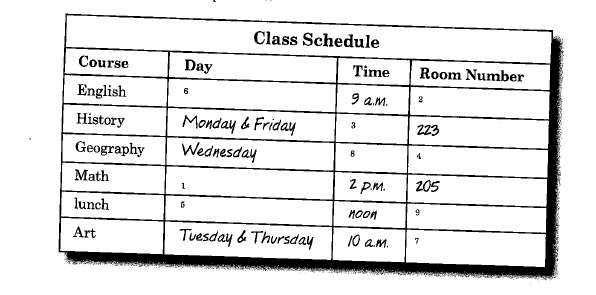
In Part 1 ( • Entering a Lesson with Predictions (Part 1: Pre-Listening Activities) , I introduced how we can help student to focus on a particular day’s materials and to become personally involved in its content. We can do it through a “prediction process.” I also described two prediction activities as entries to listening activities.
In this Part 2, I’ll share two sets of “prediction activities” as entries to speaking/discussion activities. In the first one, the prediction activity is indirectly related to the speaking activity. In the second one, it is directly related to what they will be discussing in their groups.
Example of predictions as an indirectly-related “entry” to a speaking activity
Lesson plan: The students were going to have group discussions about “fun.”
Prediction procedure (which preceded the discussion.) I found online a ranking of the 10 most fun countries in the world.
Step 1: A list of 10 countries in alphabetical order was given to each student. They then individually predicted the ranking of each one according to how fun the online survey found. Next, they formed groups of three or four and shared their guesses (predictions) with the group members.
Step 2: The teacher read the rankings, as they had been listed in the online source. Students jotted the answers on their lists.
Step 3: Still in their groups, they compared how well they had predicted.
Step 4: The students then formed new groups of three or four. The students were given a list of discussion questions about “fun.” For example
1) Did you have fun last weekend
2) When you were a child, what did you do that was fun?
3) Do you think computers are fun?
4) Is there a country or city you want to go to for fun?
etc.
Observation: Even though the ranking of fun countries had no direct bearing on the discussion that followed, students appeared to automatically think broadly about the topic of fun.
Example of predictions as a directly- related “entry” to a speaking activity
Lesson plan: Students were going to discuss cheating. Before the discussion, they were first going to read an article about students cheating.
Prediction Procedure (which preceded the above plan)
Step 1: Before handing out the articles, a list of True-False questions concerning the information in the soon-to-be-distributed article was given to each student. For example:
According to the article …
1. 50% of college students said cheating was wrong.
2. 90% of college students said that they had cheated at some time.
3. Very young children cheat more than high school students.
4. Most parents think cheating is less serious than fighting.
etc.
Each student predicted what the article would say in response to questions such as these. Then in groups, they discussed the questions and their answers and arrived at a group decision regarding each. These were then put on the board
Step 2: Students were given copies of the article, which they then read silently.
Step 3: Individual students summed up briefly for the class what the article had said in regard to each question. An acknowledgment went to that group which had most accurately predicted the article’s contents.
Step 4: In groups of three or four, students discussed cheating (using teacher-provided discussion questions) and shared their experiences.
In summary, the success of a language activity depends to a great extent on how involved students become in it. It has been our experience, and it is hoped that other ESL teachers will find the same, that by helping students to invest a part of them-selves at the “entry” into a lesson, such as was done with the “prediction procedure,” the chances for student engagment are enhanced.
David Kehe



